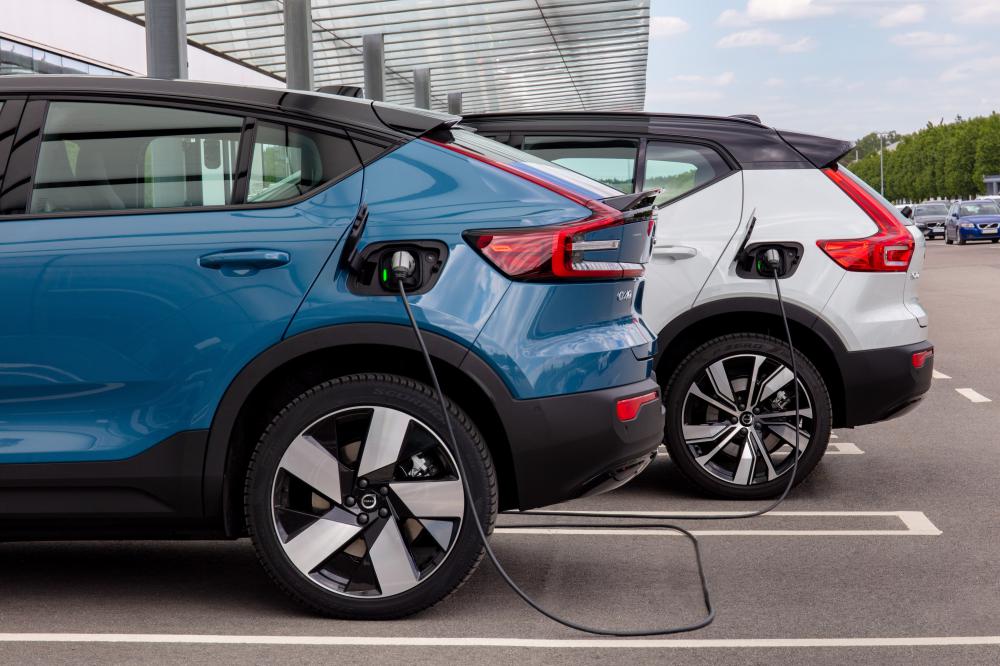First El Niño in Four Years Threatens New Economic Destruction

Getting Ready
This year has already shattered weather records in Asia. Now the official start of El Niño is underway, according to the US Climate Prediction Center, and the conditions are projected to intensify in the months ahead.
What scares many scientists is that in recent years — even without El Niño — the world has seen a growing number of weather events that at times resemble scenes in a Hollywood disaster movie.
Greg Mullins, a firefighter in Australia for more than 50 years, recalled the fear he felt facing a 60-foot wall of flames in a 2020 blaze in Batemans Bay on the east coast.

Thick smoke fills the air at a bushfire in the south of Batemans Bay, Australia, in January 2020. Photographer: Peter Parks/AFP/Getty Images
“We were just dodging falling trees, the sparks and embers, it was just incredible,” he said. “I’ve fought fires in America, I’ve studied bush firefighting in France, Spain, Canada — I know my fires. And there’s never been a fire like that.”
El Niño winters often mean less rain and snow in the northern US and Canada, adding to the drought worries that plague the region. It also dries out timber, potentially making next year even worse for fires like the Canadian blaze that turned New York skies orange last week.
Read More: Wildfire’s Toxic Legacy Leaves Children Gasping for Air Year Later
In Southeast Asia, drier conditions also worsen the annual smoke plumes that gather over Singapore when farmers in neighboring countries burn land to grow oil palm, pulpwood and rubber trees.
Extreme Weather and the El Niño-Southern Oscillation
Some of the world’s worst climatic disasters have occurred during the cycle’s peaks

April 2023
+1°C
Increase in global temperature
vs. 20th century average
1997
At least 40,000 fires in Indonesia destroyed an area the size of Costa Rica, with haze drifting
over neighboring countries like Singapore and Malaysia. The smoke impacted people’s health and caused more than 16,000 infant and
fetal deaths.
2015-2016
River banks burst after heavy rain, causing the worst flooding in 50 years in South America.
More than 150,000 people forced to evacuate in Paraguay, Argentina, Uruguay and Brazil.
1956
The Murray River flood was one of the largest to hit South Australia, also swamping towns in New South Wales and Victoria.
1983
Drought in Ethiopia and Sudan kills more than 400,000 people.
1999
Flash floods in Venezuela kill around 30,000 people.
The last eight years have
been the warmest
on record.

April 2023
+1°C
Increase in global temperature
vs. 20th century average
1997
At least 40,000 fires in Indonesia destroyed an area
the size of Costa Rica, with haze drifting over neighboring countries like Singapore
and Malaysia.
The smoke impacted people’s health and caused more than 16,000 infant and fetal deaths.
2015-2016
River banks burst after heavy rain, causing the worst flooding in 50 years in South America. More than 150,000 people forced to evacuate in Paraguay, Argentina, Uruguay
and Brazil.
1956
The Murray River flood was one of the largest to hit South Australia, also swamping towns in New South Wales and Victoria.
1999
Flash floods in Venezuela kill around 30,000 people.
The last eight years have
been the warmest
on record.
1983
Drought in Ethiopia and
Sudan kills more than
400,000 people.

April 2023
+1°C
Increase in global temperature
vs. 20th century average
1997
At least 40,000 fires in Indonesia destroyed an area the size of Costa Rica, with haze drifting over neighboring countries like Singapore and Malaysia. The smoke impacted people’s health and caused more than 16,000 infant and fetal deaths.
2015-2016
River banks burst after heavy rain,
causing the worst flooding in 50 years
in South America. More than 150,000
people forced to evacuate in Paraguay,
Argentina, Uruguay and Brazil.
1956
The Murray River flood was one of the largest to hit South Australia, also swamping towns in New South Wales and Victoria.
1999
Flash floods in Venezuela kill around 30,000 people.
The last
eight years
have been
the warmest
on record.

1997
At least 40,000 fires in Indonesia destroyed an area the size of Costa Rica, with haze drifting over neighboring countries like Singapore and Malaysia. The smoke impacted people’s health and caused more than 16,000 infant and fetal deaths.
April 2023
+1°C
Increase in global
temperature vs. 20th
century average
2015-2016
River banks burst after
heavy rain, causing the worst flooding in 50 years in South America. More than 150,000 people forced to evacuate
in Paraguay, Argentina, Uruguay and Brazil.
1999
Flash floods in Venezuela kill around 30,000 people.
1956
The Murray River flood was one of
the largest to hit South Australia,
also swamping towns in New South
Wales and Victoria.
The last
eight years
have been
the warmest
on record.

April 2023
+1°C
Increase in global
temperature vs. 20th
century average
2015-2016 | River banks burst after heavy rain, causing the worst flooding in 50 years in South America. More than 150,000 people forced to evacuate in Paraguay, Argentina, Uruguay and Brazil.
1956 | The Murray River flood
was one of the largest to hit South Australia, also swamping towns in New South Wales and Victoria.
The last eight
years have been
the warmest on
record.
As temperatures rise, power grids across the world strain to keep up. That stokes higher demand for fuel, including coal and gas. “Increasing volatility in weather will lead to higher risks and frequency of energy security events,” said Saul Kavonic, head of integrated energy and resources research at Credit Suisse Group AG, referring to blackouts triggered by fuel shortages.
While El Niño typically means fewer Atlantic hurricanes, and therefore less disruption to oil and gas operations in the Gulf of Mexico, most of the US is still facing elevated blackout risks this summer in the event of widespread extreme heat, according to a recent warning from the North American Electric Reliability Corp., the regulatory body overseeing power grid stability.
The rapid switch to renewable energy in many countries has added to the risk of blackouts. Solar farms go dark just as electricity demand peaks in hot summer evenings, and drought constrains the use of hydroelectric power.
Outages are disruptive regardless of the weather; during intense heatwaves, blackouts can have life-or-death consequences. Heat stroke can lead to severe neurological damage and even be fatal. Very high temperatures also increase the risk of heart attacks, strokes and injuries at work.
Food Issues
While some crops benefit from El Niño — higher rainfall in California benefits avocados and almonds — many staples including palm oil, sugar, wheat, cocoa and rice are produced in areas likely to face more challenging growing conditions.
Charanjit Singh Gill, 67, a rice farmer in Punjab, is starting to think about what he’ll do if the monsoon doesn’t generate adequate rainfall for his 35 acres.
“There is no way out but to spend more money running diesel-fired generators to pump groundwater,” he said. During the 2015-16 El Niño, his production costs surged by 35%, he said.
Rice Prices and El Niño
The cost of this key staple typically rises during El Niño events

Weak El Niño in 2018-19
and large Indian crop kept
price increases subdued

Weak El Niño
in 2018-19
and large Indian crop kept
price increases subdued

Weak El Niño in 2018-19
and large Indian crop kept price increases subdued
The world’s poor will face the most dire consequences. Acute food insecurity is already at a record high of 222 million people due to the combined effects of conflict, economic shocks and weather extremes.
The 2015-16 El Niño led to higher malnutrition rates and forced displacement and exacerbated outbreaks of cholera and typhoid, according to the United Nations. Nearly two dozen nations issued humanitarian appeals of more than $5 billion.

Cracked bed of the Aleixo Lake affected by a drought, near Manaus, Brazil, in October 2015. Photographer: Raphael Alves/AFP/Getty Images
Growing Stresses
No two El Niños are alike, and the effects of this cycle will hinge on its duration, intensity, and timing. These climate phenomena are “never black and white,” said Walter Baethgen, a senior research scientist at Columbia University’s International Research Institute. “In the middle of an El Niño year, where you expect a drought, you can have a big storm and have a flood.”
Still, even if the world dodges a major El Niño this year, climate-induced stresses will continue grow with the increasing amount of greenhouse gases blanketing the planet.
To understand the oscillation between El Niño and La Niña in the overall context of climate change, think of a person on a rising escalator, either standing on tiptoe or squatting. They may look taller or shorter, but they’re still heading in the same direction.
“The escalator is only going up,” said Mike McPhaden, a senior scientist at the US National Oceanic and Atmospheric Administration. “There’s a huge amount of heat stored below the surface that’s ready to erupt.”













